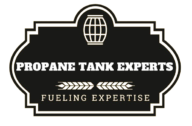LP Gas Tank Sizes: Choosing the Right Size for Your Needs
Introduction: LP gas tanks, also known as propane tanks, come in various sizes to accommodate different energy needs and usage patterns. Whether you’re powering your home, heating your water, or grilling outdoors, selecting the right tank size is essential for ensuring a reliable and efficient fuel supply. In this blog post, we’ll explore the different LP gas tank sizes available, their typical uses, and how to choose the right size for your specific requirements.
Understanding LP Gas Tank Sizes: LP gas tanks are available in a range of sizes, measured in gallons, to suit various residential, commercial, and industrial applications. The most common LP gas tank sizes include:
- 20-Pound Cylinder: Often used for portable grills, camping stoves, and small appliances, 20-pound cylinders are lightweight and easily transportable. They’re also commonly used for recreational vehicles (RVs)
- and outdoor heating equipment.
- 100-Pound Cylinder: Larger than 20-pound cylinders, 100-pound cylinders are suitable for moderate residential heating, cooking, and hot water applications. They’re commonly used in small homes, cabins,
- or as backup propane storage for larger tanks.
- 500-Gallon Tank: Ideal for larger homes, commercial buildings, and moderate to heavy-duty heating and cooking needs, 500-gallon tanks offer a substantial fuel supply and extended run times between refills. They’re often used in rural areas or
- areas without access to natural gas infrastructure.
- 1,000-Gallon Tank: Designed for high-demand residential, commercial, or industrial applications, 1,000-gallon tanks provide a large fuel supply for heating, cooking, and power generation. They’re commonly used in agricultural operations,
Choosing the Right Tank Size: Selecting the right LP gas tank size depends on several factors, including:
- Energy Needs: Consider your typical propane usage for heating, cooking, hot water, and other appliances. Calculate your average propane consumption to determine the appropriate tank size for your needs.
- Space Availability: LP gas tanks require adequate space for installation and safe operation. Ensure you have enough room on your property to accommodate the chosen tank size, including clearance requirements from buildings, property lines, and other structures.
- Refilling Frequency: Smaller tanks may require more frequent refills, while larger tanks offer extended run times between refills. Consider your preferences and convenience when choosing the tank size that best suits your refilling frequency.
- Budget: Larger tanks generally have higher upfront costs for installation and equipment, but they may offer long-term cost savings by purchasing propane in bulk and minimizing delivery fees. Evaluate your budget and long-term fuel expenses to determine the most cost-effective option for your needs.
